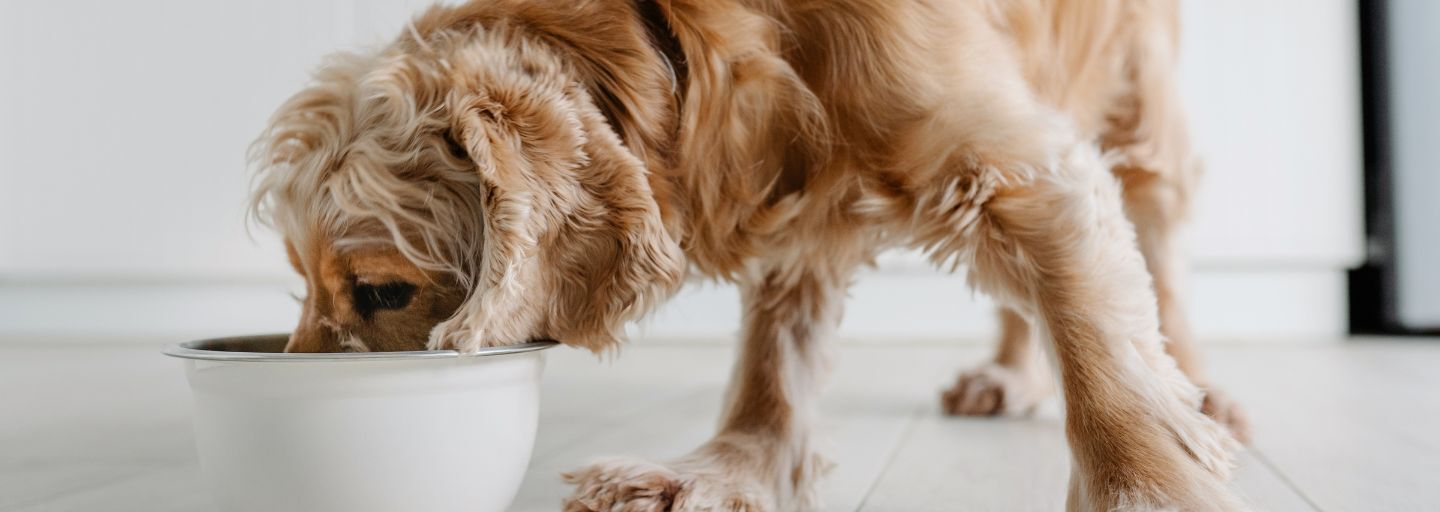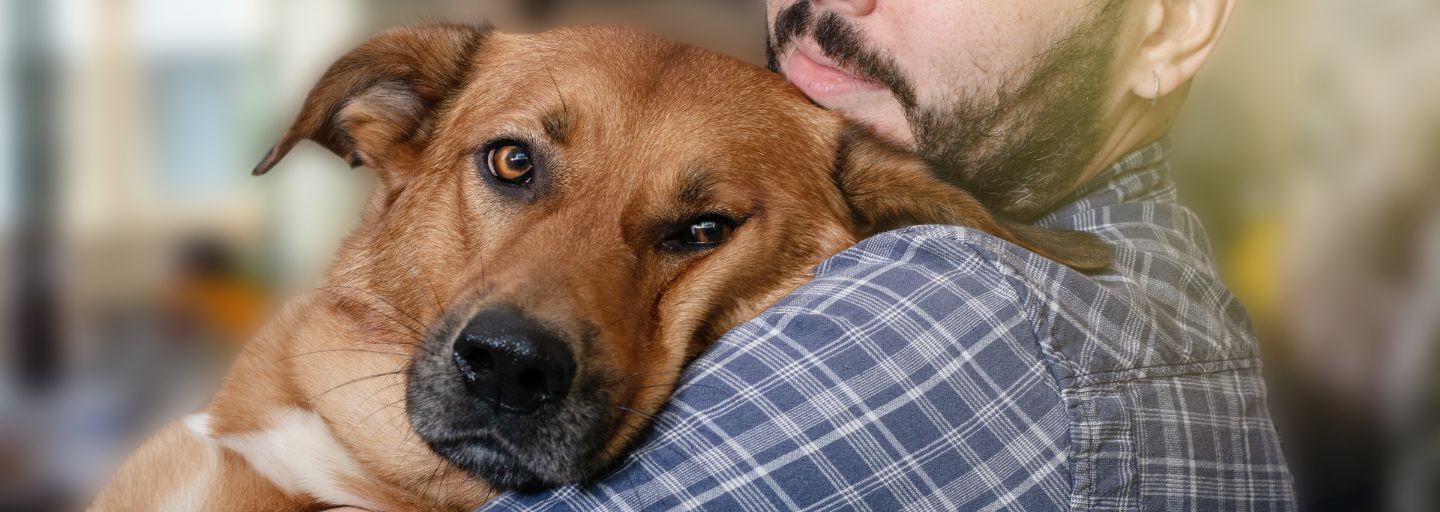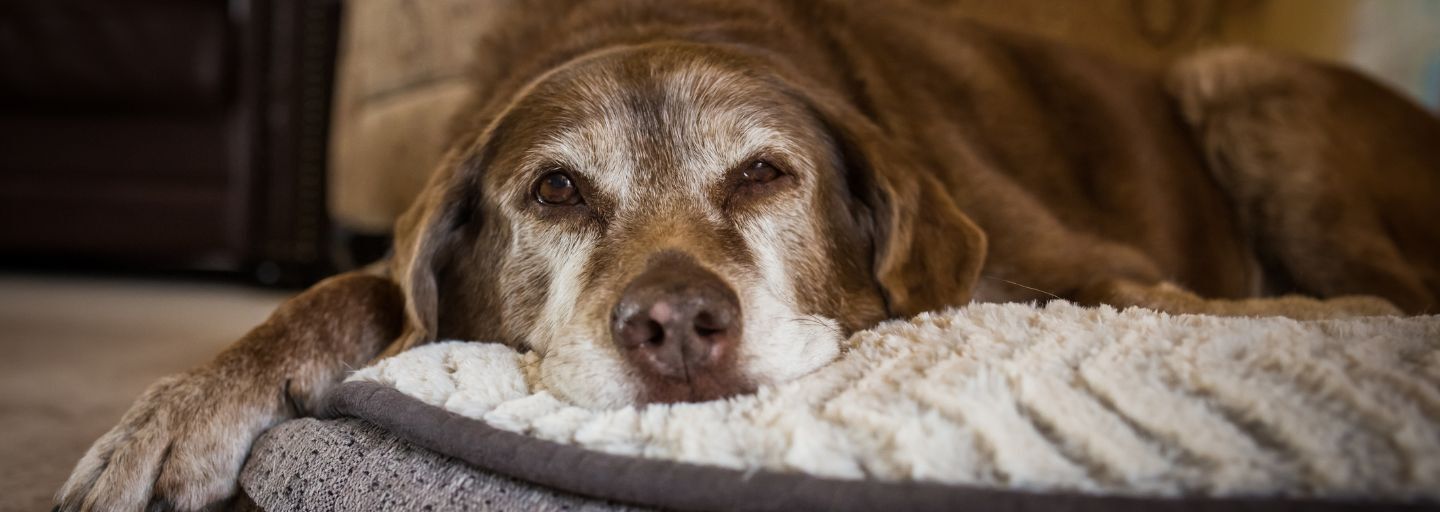To maintain your dog’s quality of life as he edges towards his senior years, it's time to reassess his nutritional requirements.
Senior Service
In general, dogs of seven years and older start taking life a bit easier and, as a result, their nutritional needs begin to change once more. With large breeds, this change will take place at around five years old.
Senior dogs are less active and have a slower metabolism, so fewer calories and less fat are required. But high-quality, easy-to-digest protein becomes more important than ever to help maintain a good overall body condition.
A good senior diet provides concentrated, high-quality protein, is low in fat, and contains easy-to-digest carbohydrates for energy. Key minerals support aging joints, and vitamins C and E, along with protein, help fight infections to which the body may become vulnerable as the immune system declines.
Choose the Right Food
As dogs age, their senses of smell and taste can fade a little, along with their ability to chew effectively. A smaller size of dry-food kibble will help your dog get the most out of meals, and a higher meat content helps whet the appetite.
For that reason, it's advisable to move older dogs onto a specially formulated senior dog food. Manufactured senior dog foods are carefully formulated to reflect these changes in nutritional requirements and feeding habits. So your dog can continue to enjoy mealtimes to the full without compromising on the essentials.
As always when changing to a new food, you should start by mixing the new formula with what they are used to, slowly building up the proportion over a week to 10 days until you are only feeding the new senior formula food.
How to Feed
Feed your older dog once or twice a day, although some seniors may start to prefer smaller portions more frequently, especially if you serve canned food. Be careful not to overfeed, as older dogs are less active and particularly prone to weight issues.
Serve food at room temperature to ensure your dog can taste and smell it properly. This is especially important for older dogs with their diminishing sense of smell. If you are feeding canned food, warming up an opened can may take up to two hours once it’s been taken out of the fridge. Alternatively, you might consider microwaving wet foods (out of the can) for a short time. But avoid serving food that is either too hot or too cold.
If feeding a dry complete food, store it in a dry, clean environment. Re-sealable packaging or an airtight container keeps it tasty by sealing in the aroma.
Your dog should be fed in a quiet place away from interruptions and away from where you eat. It's always a good idea to feed on a surface that is easily cleaned, like a tiled floor or a mat. Larger breeds, susceptible to arthritis in old age, may find it hard to lean down and will benefit from a bowl placed at head height.
Don't allow children to interrupt your dog when he is eating, or he may mistake them as a 'predator' trying to steal food and react aggressively.
How Much?
Follow the feeding guide on the back of the pack, but remember the guide is only there to give you an idea. Every dog is an individual, so the most important consideration is to feed enough to maintain a lean, healthy condition. Always provide a bowl of fresh drinking water.
Weight Concerns in Older Dogs
Less-active older dogs are especially susceptible to weight gain. Obesity is a common nutritional disorder in all dogs and needs to be monitored carefully. Overweight dogs are more likely to develop diabetes, heart and respiratory problems, and arthritis.
Lower calorie levels in senior foods can help control the tendency. But if weight gain is a growing concern, consider trying a specially formulated ‘light’ product, lower in fat while still containing all the necessary vitamins and minerals, ensuring a balanced diet despite reduced calorie intake.
Purina Brands for Senior Dogs
Several leading Purina brands offer formulas specifically developed to meet the needs of older dogs, each the result of the very latest scientific advances in quality, taste, and nutrition. Click any brand to learn more.
Senior and geriatric dogs need a low-calorie and higher-fiber content diet. Their diet should be adjusted for a slower metabolic rate as older dogs become less active.
Below are some of the Senior-specific foods that we offer:
PRO PLAN Bright Mind
Around age 7, the glucose metabolism in the majority of dogs' brains begins to change, affecting their memory, learning, awareness. To meet their new nutritional needs, PRO PLAN Bright Mind is specially formulated with botanical oils that can be used as an additional energy source for the brain in dogs age 7+.
SUPERCOAT Senior
Reduced activities in older dogs can also be caused by joints and orthopedic issues in general. Hence, SUPERCOAT Senior is formulated with Omega 3 from fish that promotes healthy joints and mobility.



